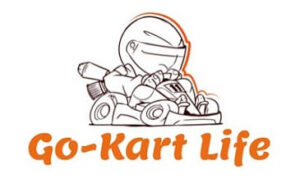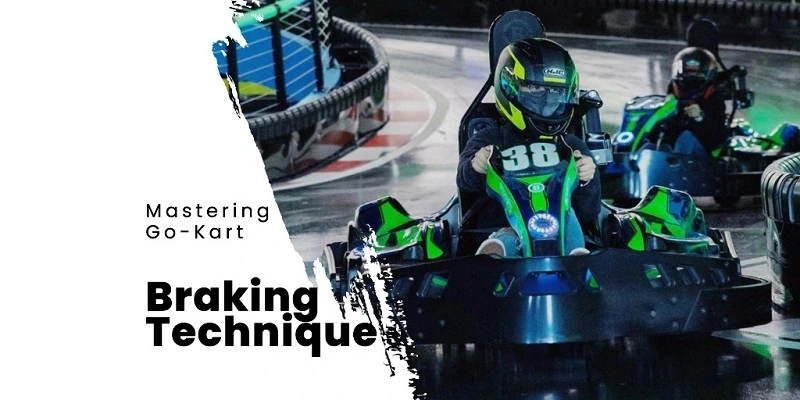The go-kart braking technique is an essential aspect of go-kart racing that can significantly affect your performance on the track. Unlike cars, go-karts don’t have front brakes, and the braking system is usually located at the rear of the vehicle.
This difference makes go-kart braking techniques unique, and mastering them is crucial to achieving optimal performance on the track. Learning to brake effectively allows you to navigate turns more efficiently, maintain better control, and achieve faster lap times.
Fundamentals of Go-Kart Braking
Steps to Proper Braking
- Choosing a starting point – Knowing where to start braking is essential. Observe track markers and reference points to gauge your braking distance.
- Selecting an appropriate braking point – Brake in a straight line before turns. This helps maintain stability and control.
- Applying brake pressure – Apply gradual pressure on the brake pedal. This prevents locking the wheels and losing control.
- Releasing brake pressure and regaining control – Release the brake pedal smoothly as you enter the turn. This helps you maintain traction and stability.
Identifying the Right Time to Brake
- Braking before turns – Braking before a turn is important to maintain control and balance.
- Braking in a straight line – Apply the brakes in a straight line to keep your kart stable and avoid spinning out.
What to Expect During Braking
- Changes in engine notes – The engine sound may change while braking. This is normal.
- Tire noise and kart movement – You may hear tire noise and feel kart movement as you brake. This is part of the braking process.
Common Braking Mistakes and Solutions
1. Weak or Ineffective Brakes
Weak or ineffective brakes can significantly hinder your go-kart’s performance and compromise your safety. Regularly inspect your braking system for worn-out components, leaks, or other issues.
If your brakes aren’t performing as they should, it’s essential to consider a brake replacement to ensure a safe and optimal driving experience. You might also consider upgrading to a higher-quality braking system for better performance and reliability.
2. Turning Too Fast or Too Wide
Turning too fast or too wide can cause your kart to lose traction, slowing you down or leading to an accident. To avoid these issues, practice braking and cornering techniques to maintain optimal speed and control through turns.
This involves finding the right balance between entering and exiting turns with the proper speed and using both braking and throttle control. Learning about the go-kart cornering technique can help you improve your skills and optimize your performance on the track.
3. Over-braking or Under-braking
Over-braking or under-braking can negatively affect your kart’s handling and overall speed, so finding the right balance is essential. Experiment with different braking points and techniques to determine what works best for your driving style and the specific track you’re racing on. Pay attention to how your kart responds when you brake earlier or later, and use that information to fine-tune your approach.
Don’t be afraid to seek guidance from experienced racers or coaches who can provide valuable insights on improving your braking skills. By refining your braking technique, you’ll be able to navigate turns more effectively and achieve better racing performance.
Advanced Braking Techniques
Maximizing Braking Efficiency
- Balancing throttle and braking – Apply smooth throttle input while braking to maintain control. By mastering the art of balancing throttle and braking, you can navigate corners more effectively, which leads to better racing performance. Learn more about driving a go-kart to improve your skills.
- Distributing weight on rear tires – Shift your body weight to the rear tires during braking for better grip. Proper weight distribution can help maintain traction and improve kart handling. Familiarize yourself with the go-kart weight limit to stay within safe parameters.
Trail Braking
- Definition and benefits – Trail braking is a technique that releases brake pressure as you turn, maintaining better control and speed. This method allows you to navigate corners more efficiently and shave valuable seconds off your lap time.
- Steps to execute trail braking – Apply brake pressure in a straight line, gradually release as you enter the turn, and maintain smooth throttle input. This helps maintain a stable kart through the turn, leading to better cornering speeds.
- Tips for successful trail braking – Practice, stay focused, and be patient to master trail braking. Learn from experts and take time to analyze your performance to refine your technique.
Power Braking
- Explanation and risks – Power braking is a high-risk technique involving sudden, hard braking. It can cause loss of control, tire lock-up, or damage to your kart’s components. Understanding go-kart braking principles is essential before attempting power braking.
- Proper execution – Use power braking sparingly and only when necessary. Apply firm pressure on the brake pedal without locking the tires, and be ready to release it quickly to avoid losing control.
- Instances when power braking is useful – Use power braking in emergencies or to avoid a collision. It should not be a regular part of your driving technique but a last resort in critical scenarios. Be mindful of kart safety when practicing this method.
Practicing and Improving Braking Skills
Importance of Track Time
- Building muscle memory – Spending time on the track allows you to develop muscle memory for braking techniques, making them second nature during races. Consistent practice is essential to improve your skills and gain a competitive edge. Visit go-kart tracks to find a suitable location for practice.
- Adapting to different conditions – Track time helps you become familiar with various track surfaces and conditions, teaching you how to adjust your braking techniques accordingly. The more experience you gain, the better you anticipate and react to changing conditions.
- Monitoring progress – Regular track time allows you to track your progress and identify areas for improvement. By consistently practicing, you can refine your techniques and become a more confident, efficient driver.
Seeking Guidance From Experienced Racers or Coaches
- Gaining valuable insights – Experienced racers and coaches have honed their skills and can provide valuable insights and tips to improve your braking techniques and overall performance. They can share go-kart racing secrets that can give you an edge in competition.
- Personalized feedback – Working with experienced racers or coaches lets you receive personalized feedback on your braking and driving techniques. This tailored guidance can help you identify and correct specific issues, leading to faster improvement.
- Networking opportunities – Engaging with experienced racers and coaches can also open doors to networking opportunities within the karting community. This can lead to new friendships, collaborations, and even sponsorships.
Experimenting With Various Braking Techniques
- Identifying strengths and weaknesses – Trying different braking techniques helps you discover which ones work best for you and your kart. By experimenting, you can determine your strengths and weaknesses, allowing you to focus on improving specific aspects of your driving.
- Adapting to different karts and tracks – Different braking techniques may be more effective on specific karts or tracks. By experimenting, you’ll learn which techniques to apply in different situations, making you a more versatile driver. Learn about different types of go-karts to understand their unique characteristics and handling.
- Developing a unique driving style – Experimenting with various braking techniques can help you develop a unique driving style that sets you apart from your competitors. By cultivating your approach, you can become more unpredictable on the track, making it harder for opponents to anticipate your moves.
Conclusion
Mastering braking techniques can greatly improve your racing performance. Remember to balance competitiveness with enjoyment and safety while honing your skills. Proper braking is crucial to achieving optimal performance on the track, and with time, patience, and practice, you’ll be able to navigate turns and control your kart like a pro. Equip yourself with the right safety gear, maintain your kart, and consult experienced racers or coaches about developing your skills further. Happy racing!
Frequently Asked Questions
Braking while cornering can be challenging because it can cause a loss of grip and control, potentially leading to understeer or oversteer. However, using a technique like a trail braking can help maintain control and speed through corners. It involves gradually releasing brake pressure as you enter the turn and applying smooth throttle input.
Yes, trail braking can be an effective technique in go-karting. Balancing braking and throttle input helps maintain control and speed through corners. However, it takes practice and patience to master.
You should brake on a go-kart before entering a corner in a straight line. This allows you to transfer weight to the front wheels, increasing grip and helping you steer more effectively. The specific braking point depends on factors like speed, kart type, track conditions, and the tightness of the turn. Experiment with different braking points to find the best balance for you and your kart.
Most go-karts don’t have front brakes to keep the design simple and reduce weight. Rear brakes are usually sufficient for effective braking in go-karting. Additionally, having only rear brakes helps prevent front wheel lock-up, which can lead to understeer and a loss of control.

Goran, an experienced go-kart racer, fuels GoKartLife.com with his passion and expertise. He offers valuable insights and tips for fellow enthusiasts, fostering the growth of the go-kart community. Join Goran at GoKartLife.com and immerse yourself in this exhilarating sport.

